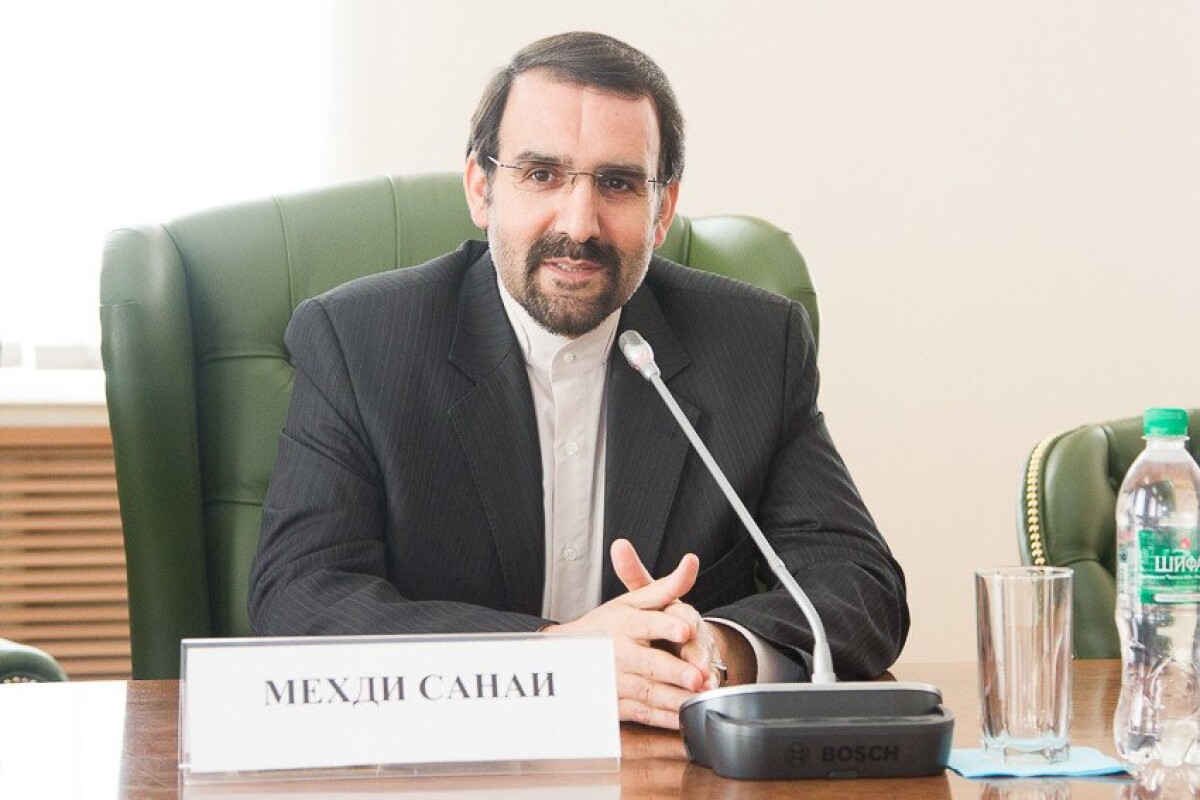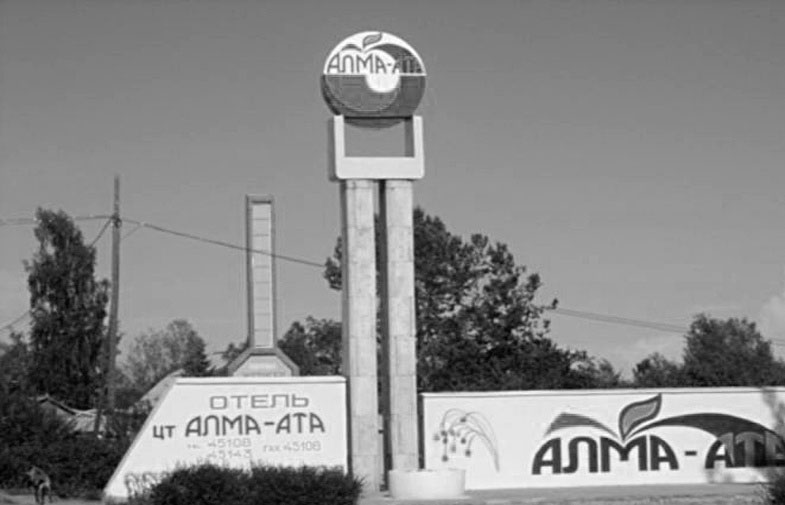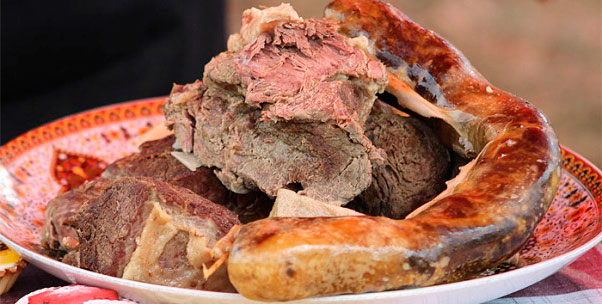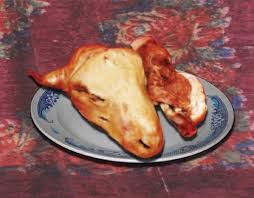
Such notes are interesting and popular among the reading public. This is not an official chronicle, but thoughts and observations of a person "from outside." In such notes you can find the information that you can not find in carefully edited messages. Travel notes were originally intended for the Iranian reader, who knows little about the life of Kazakhstan. M. Sanaei headed the Cultural Representation at the Embassy of the Islamic Republic of Iran in Kazakhstan in 1995-1998.
On April 10, 1997 at 12.30, leaving Almaty, we flew to Akmola. We wanted to visit this city for a long time, but for various reasons the trip was postponed all the time. Akmola, a small city with a population of 300 thousand people, is located among the steppes of Desht i-Kypchak (so called in the medieval Persian literature the territory of present-day Kazakhstan).

Here, unlike Almaty with its moderate climatic conditions, cold steppe winds are constantly blowing. That is why winter in Akmola is very harsh and accompanied by winds and snowstorms. One can not fail to notice the fertility of its vast lands by flying over the Kazakh steppes on an airplane. The boundless steppe expanses with a large number of annual precipitations are favorable for the cultivation of grain crops.

At the airport, we met a representative of the mayor's office, the chairman of the Muslim Women's Society, the head of a large local bank and several figures of literature and culture. From there we went straight to the hotel "Akmola" - located in the center of the city. The director of the hotel, who is also an activist of the Muslim Women's Society, welcomed us very warmly. Akmola two years ago, by the orders of the President of the country and for reasons we will later discuss in more detail, was declared the new capital of Kazakhstan (it should be noted that now the city is renamed to the city of Astana - from the Persian word meaning "threshold", "vestibule", which is understood by the Kazakhs as a "capital").
The word "Akmola" in Kazakh means "white grave", apparently because of the appearance of the city near the grave of the revered person. In the 1960s, during the development of virgin lands, the city was renamed Tselinograd, and after Kazakhstan became sovereign, it acquired its old name. Incidentally, President of Kyrgyzstan Askar Akayev who arrived last week in Akmola on an official visit, at a meeting with Nazarbayev suggested calling the city "Kazakhstan".

Geographically, Kazakhstan is a vast buffer zone of 2.7 million square kilometers between Europe and Asia. And the population (about 17 million people) is the second in Central Asia after Uzbekistan. In the north and north-west the republic borders with the Russian Federation, the length of the border is 6846 km, in the east - with China, in the south - with Kyrgyzstan, Uzbekistan and Turkmenistan. In the west, Kazakhstan's coasts for 1900 km are washed by the waters of the Caspian Sea. Compared with other republics Kazakhstan is rich in minerals. But the main achievements of the republic are related to the production of agricultural products, for example, in 1992, about 30 million tons of grain was received. The traditional branch of Kazakhs - livestock breeding - is developed. In 1992, there were 35 million heads of small and 10 million heads of cattle, 2 million horses and 3 million pigs in the republic.
Akmola is located closer to the northern regions of the country, in the Central Steppe. Despite snowstorms, not very suitable weather conditions and economic difficulties, the president's decision to move the capital is unshakable. The transfer of the capital from Almaty to Akmola is associated with a number of factors. Among them are seismic conditions of Almaty; remoteness of the city from most regions of the country; its proximity to the Chinese borders; the need to colonize the central and northern regions at the expense of the densely populated southern regions; the presence of a large number of industrial enterprises in Almaty, which can lead to adverse environmental consequences.

Over the past decades, several earthquakes have occurred in Almaty, one of which has led to serious destruction. In early 1995, this issue, along with an indication of the need to move the capital, became the object of serious media attention. Once, the government has already announced a general readiness throughout the city. There were educational warnings about an alleged earthquake. As a factor in favor of the transfer of the capital, even the proximity of Almaty to the Chinese border was called, which allegedly carries a certain danger to the state.
But for the sake of justice it should be noted that, taking into account the economic difficulties, all the factors listed above seem insufficiently convincing for the transfer of the capital. It seems that the main reason is the need to move the population, most likely Kazakh, from the southern regions to the north and into the central parts of the republic, where the density of population and the proportion of Kazakhs are small. In general, the transfer of the capital, which becomes a real fact due to the personal initiative and efforts of the President of the Republic, is a decisive step to strengthen state power throughout the territory of Kazakhstan. Thus, Akmola becomes the fourth capital of the country. Prior to Almaty, the capital of the republic was the city of Kyzylorda, located in the south-west of Kazakhstan. And in the 1920s for a short time the capital of the republic was the city of Orenburg, which as a result of subsequent disengagement became part of the Russian territory.

On April 11, 1997, we organized a meeting at the Agrarian University. The university is located in the capital, in the central agrarian part of the country with fertile land suitable for growing grain. This is one of the most important universities of the republic.
After a short meeting and conversation with the rector, together we went to the conference hall, where more than 500 students and university teachers waited for us. After a short speech by the rector who introduced us to the audience, the floor was given to me. My short speech was devoted to the system of secondary and higher education in Iran. For those present, this was the first meeting with the representative of Iran, so I briefly told them about the past and present of the country. Over the past two years, I have established the following pattern: every time at first I came across an indifferent attitude of the students and teachers present, who were gradually animated and at the end of the speech showed great interest in the topic under discussion.
After the end of this meeting, the correspondent of the newspaper “Azamat Times” which is published in Akmola in a large circulation in Russian spoke with me. Today we had several more meetings: one meeting in the regional television studio with several heads of various city structures and journalists, the other with the management of a well-known non-state bank that is equipped with the latest computer technology. Before that, I did not even think that there could be a similar bank in Akmola, and even non-state, with such modern equipment.
In the afternoon we visited the Biotechnology Research Center, which had all the conditions for scientific research in order to identify and prevent various diseases of plants, animals and birds. 60 km from Akmola there is another important Seed Research Center.
We dined with our caring owners at the restaurant "Ak Bulak" (White Spring). It was decided that in this restaurant, where the meat meets Islamic requirements, we will be invited several more times. Dishes served to us in this restaurant, basically consisted of meat and fat, prepared in various ways with spices.

In the Kazakh cuisine meat and dairy products prevail. Here the influence of the former nomadic way of life is affected, when the main occupation was livestock breeding. The most important and nutritious dish is "et" (meat). The main Kazakh dish is called "besbarmak"; Kazakhs treat it to the most honorable guests. To prepare besbarmak, mutton carcass is cut into pieces and boiled in a large cauldron. There add thinly rolled out cut into pieces dough, as well as potatoes and onions. Lamb's head is cooked separately. Pieces of boiled mutton serve guests on several dishes. On the first dish, the most honorable guest is served with a sheep's head with meat from the top of the thigh, on the second dish is presented the lower part of the thigh with bones, on the third - meat from the parts below the hip, the remaining lamb is served on the remaining dishes.

A dish with a ram's head is served to the oldest or most honorable and respected guest. And he, in turn, according to the tradition widespread among the Kazakhs and Kirghiz, divides the lamb's head into several parts: the ears are given to children to listen, the tongue is given to the most educated, the eyes are given to the most active men and wish them "keen eyes", the meat around the mutton mouth - to any of the guests and wish to be dexterous and businesslike, the rest of the meat is divided among the remaining ones, for it is believed that if a person receives meat from the hands of an elder revered in tribe, this will help to achieve his age and position.
Everything we talked about is not a story, but the custom which still exists among the Kazakhs and Kirghiz throughout their territory. And I many times, being on a visit both in Almaty, and in other regions of the republic, I myself made this ritual of dressing meat with strict observance of the traditional procedure.

Kazakhs have more than 50 meat dishes. Among them, such as "asip" - boiled sausage from the insides of the ram, "basturma" jerky beef, "zhaya" - is prepared from horse meat, "zhal", "shuzhuk", "kazy", "kimai", "kuyrdak" and many other. Kazakhs consume a lot of horse meat and for the most expensive guests the horse is slaughtered for meat. One of the most favorite drinks among Kazakhs is the mare's milk "koumiss". With a relatively long storage, a small proportion of alcohol is formed in milk.
Kazakhs eat slowly, strictly observing etiquette. Eats and drinks consist of several dishes, at the end of which a pilaf is often served, containing a lot of meat and fat.
Contrary to all that I heard about Akmola before this trip, it seems to me that this city is worthy to become the new capital of the republic. Nowadays, according to all indicators, Akmola is a city on the level of Ashgabat, and even slightly better. For me, a very important observation was the love with which our hospitable hosts spoke about their people and about Akmola. The declaration of Akmola as a capital promotes the acceleration of the process of Kazakhization of all regions of the republic, and the population of the city has already prepared itself for life in the capital of the country.
In my opinion, it was this love for their people, for the national values that allowed the Kazakhs to preserve their national mentality even after three centuries of Russian domination. It is interesting that the Kazakhs managed to adopt Russian positive cultural traditions, as well as achievements of industrial and economic nature and at the same time managed to preserve their national traditions. At home, they are Kazakhs - with their dombra, the cult of besbarmak and koumiss. They are proud of all this, trying to find a history for each of their traditions in a few thousand years.
The trip to Akmola ended, and we flew by plane to Almaty.
Translated by Raushan MAKHMETZHANOVA
